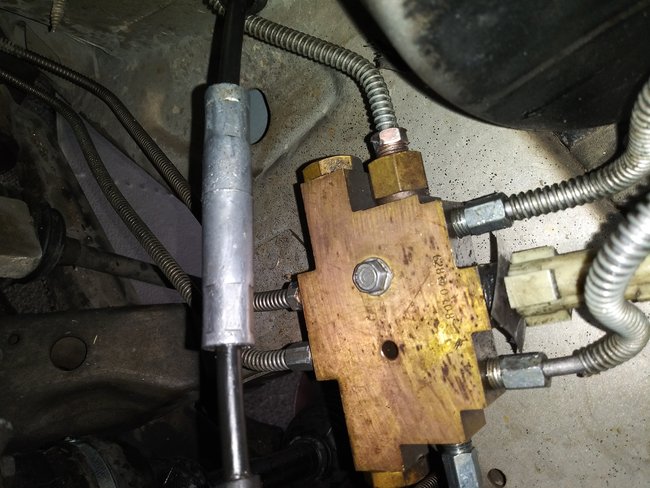Good afternoon,
I attached the procedure for bleeding for you.
https://www.2carpros.com/articles/how-to-bleed-or-flush-a-car-brake-system
Do you have a vacuum booster or a hydraulic booster?
Roy
PRESSURE BLEEDING
The brake lines can be bled using a standard diaphragm type pressure bleeding system. Use only a diaphragm type system to prevent contaminants from entering the system.
1. Ensure ignition remains off for the entire procedure.
2. Depressurize the hydraulic accumulator as outlined under "Booster Bleeding."
3. Disconnect electrical connector from fluid level sensor, then remove reservoir cap.
4. Install pressure bleeder adapter, then attach bleeding equipment to adapter. Charge pressure bleeder to 20 psi.
5. Connect a transparent hose to caliper bleed screw, and submerge the other end in a clear container, partially filled with clean brake fluid.
6. Turn pressure bleeder on, then open caliper bleed screw 1/2-3/4 turn allowing fluid to escape until no more air bubbles are present. If reservoir has been drained, or hydraulic assembly removed prior to bleeding, pump the brake pedal slowly one or two times with bleed screw open to purge air from hydraulic assembly.
7. Repeat step 6 for each caliper in the following order: LR-RR-LF-RF.
8. After bleeding all calipers, close the pressure bleeder valve and torque to 7.5 lb-ft, then slowly unscrew the bleeder adapter from the hydraulic assembly reservoir.
9. Use a syringe or other method to remove excess fluid from reservoir and adjust to the full mark.
10. Install reservoir cap, connect the fluid level sensor connector, and turn on ignition to allow pump to charge the accumulator.
MANUAL BLEEDING
1. Depressurize the hydraulic accumulator as outlined under "Booster Bleeding."
2. Connect a transparent host to caliper bleed screw, and place the other end of hose in a transparent container partially filled with clean brake fluid.
3. Slowly pump brake pedal several times with full strokes of the brake pedal. Allow about five seconds between pedal strokes. After two or three strokes, continue holding pedal under pressure at the bottom of its travel.
4. Open the bleed screw 1/2-3/4 turn. Keep screw open until fluid no longer comes out from bleeder, then tighten bleeder screw and release brake pedal.
5. Repeat this procedure until air bubbles are no longer present in fluid coming from bleeder hose.
6. Repeat for all wheels in the following order: LR-RR-LF-RF.
Monday, April 13th, 2020 AT 10:24 AM




